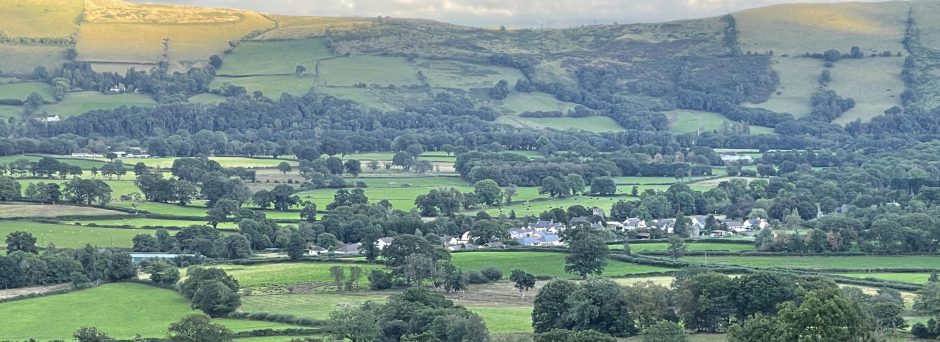- Recent History
- Cilycwm at war
- Church and Chapels
- Sports and Play Area
- Tales and Characters
- Memorial Plaques
- Rural Industry
- Archaeology
- Archive
- Further Reading
Introduction
The present day population is around 390 adults with the largest landowner being the Queen – the owner of Mynydd Mallaen. Also a large acreage has been planted and is owned by Forestry Enterprise.
There are also several connections to Hell (uffern). Pwll Uffern is a large pool on the river – Devil’s Staircase is near by Abergwesyn, and also the late squire used to say that Cil-y-cwm was near hell, because snow would always melt quickly due to the heat from the place.
There used to be a saying that Cil-y-cwm was only as big as between New York and Pennsylvania. There used to be a cottage called New York just above Penstacan and Pennsylvania was opposite the Ygoldy fach and Gwenlais stream.
It was a common practise in those days to hold fairs. Dates of fairs in Cil-y-cwm were June 17th, August 20th and November 11th and 22nd. These fairs were very important events in the community, even as far as Rhandirmwyn , as the register for the school for 1866 states that there was no school because of the fair at Cil-y-cwm. The history of the village itself has evolved from a time when people of the area lived on the hills for whatever reason, (probably for safety). Most hills in the area have farms or a cottage with names which denote some sort of hill fortification , e.g Penyfedw there were two dwellings, Bryncastle and Cae’r Beili. The farms whose names are Dinasbach, Troedrhiwdinas and Cwrdinas also imply some sort of fortificatiom. Nant y Car, Siloh should be Nant y Caer. Also there is Pen-y-gaer in Llanfair ar y Bryn These obviously belong to a time long ago – Iron age or possibly pre – Roman era.
There is also a mention that there was one at Glanrhyderryd, possibly more associated with the Roman period.
As the years rolled by the people moved down into the valley and eventually to Cil-y-cwm. According to Miss Dory Theophilus the village was in the field belonging to Felin behind Mr. & Mrs. Milner but during the plague (Black death) the village moved across the Gwenlais. During the 19th century there were thought to be 4 taverns in the village. The 4 names taken from the register of deaths from the church are:-
- in 1844 – Masons Arms ( Cwin House)
- in 1847 – Black Lion ( Neuadd Arms)
- in 1867 – Drovers Arms
- in 1867 – Lamb Inn
There were also 4 mills in Cil-y-cwm – Melin Cwmfran, Felin Cil-y-cwm, Melin Abergwenlais and Melin Aberrhaead.
During this penod there was obviously a need to become self sufficient in a need, of the area, and it is interesting to note what skills were available in the area. Thanks to Handel Jones there is a list of landlords and cottages from Cil-y-cwm who made Easter Offerings in 1776.
There was a gent in Erryd, Cefntrenfa, Pwllpryddog, Abergwenlais and Bwlch trebannau.
- 2 smithies – one in Penybanc,
- 2 cooper’s – one in Nant Rhydfelen,
- 2 millers,
- 4 tailors – one in Rhydtalog and one in Llwynni,
- a cooper in Nantrhydfelen,
- a harper – Daniel John,
- a clockmaker,
- a hosier,
- a mason,
- a weaver,
- a carpenter,
Today’s parish is surrounded by Llanfair ar y bryn to the east: by Llanddewi Brefi towards the north, Caeo to the west and Llandovery and Llanwrda to the south. At one point there is a suggestion that Cil-y-cwm should, or possibly was called Llanfihangel – obviously because of the church St. Michaels
Jump to top
